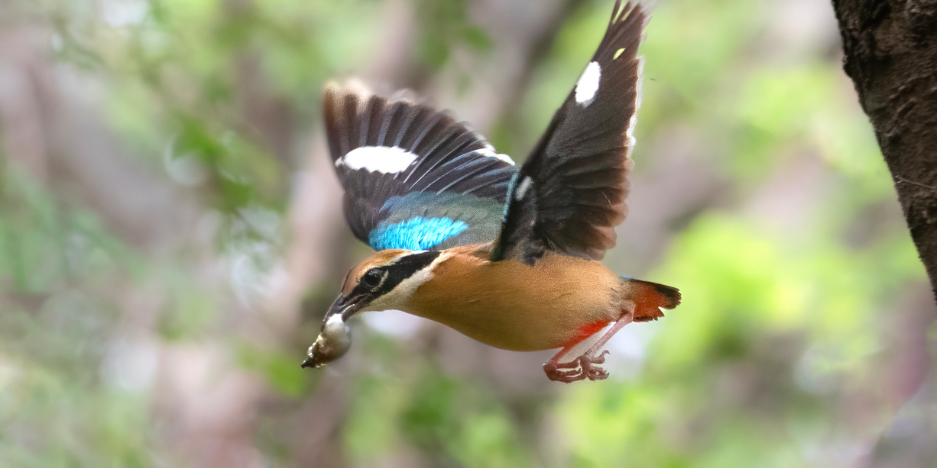

Dr T Divakara Rao CMO (SAG) | Central Government Health Scheme | Min of Health & Family Welfare New Delhi
The Indian pitta is a small passerine and one of the most colourful birds found in the country. In Hindi, it is commonly known as Navrang. The word ‘pitta’ is actually derived from Telugu, in which language it means ‘small bird.’ This avian species breeds in the Himalayan foothills and northern parts of India, from June to August, and roosts in trees. Their nest building abilities are very good, usually on the branches of medium-sized trees. The nests are made up of dry leaves and grasses, in which they lay up to four or five eggs.
In our everyday lives, the biggest problem we face is sanitisation. Everyone wants a cleaner environment to live in, though we only think and do nothing. We don’t think practically, of the concrete steps to be followed. However, in the animal kingdom – particularly among birds – sanitation is not just considered, it is meticulously practiced. Every action is calculated, organised, and time-bound, ensuring the wellbeing of the birds’ offspring and the safety of their nests.
How do birds manage the poop of chicks in nests?
During the nesting period, many bird species exhibit extraordinary parental care, feeding their chicks regularly until they can fend for themselves. But have you ever wondered how these diligent parents manage the poop of their nestlings? The answer lies in a fascinating natural adaptation: the fecal sac.
Indian pittas, for instance, have nestlings that excrete their waste in the form of fecal sacs. These sacs are often white with a black patch on the tip, and can be easily transported. The parents of the nestlings frequently remove these sacs from the nest, ensuring the living area remains clean.
Chicks signal the presence of a fecal sac through their body language, making it easier for the parents to spot and dispose of the waste. In some cases, the chicks place the sac at the rim of the nest, from where it can be effortlessly picked up and taken away by the parent birds.
This diligent housekeeping serves multiple purposes. Firstly, it maintains the hygiene of the nest, preventing the build-up of waste that could lead to diseases. A clean nest is crucial for the health and development of the chicks. Secondly, the removal of fecal sacs helps protect the nest from predators, which the peculiar smell of poop can attract, thus putting the young birds in danger. By keeping the nest clean, parents reduce the risk of detection and increase the chances of survival of their offspring.
Interestingly, in some bird species, parents, particularly females, consume the fecal sacs. This behaviour not only ensures the immediate removal of waste but is also a sign of recycling of nutritional material, providing an additional benefit to the adult birds.
In many bird species, the responsibility of disposing of fecal sacs falls more heavily on females than on males. This dynamic highlights an interesting aspect of avian behaviour, where females take on a more significant role in maintaining nest hygiene, reflecting a division of natural duty that extends beyond mere survival.
Lessons from the Avian World
The fastidious cleanliness practices of birds offer valuable lessons for us humans. While we often deliberate on how to maintain a cleaner environment, birds show us that consistent and organized efforts can make a vital difference. Their instinctive actions to keep their nests clean and safe for their young ones underline the importance of sanitation and proactive waste management.
The natural diaper duty performed by birds is a testament to the incredible ways in which nature ensures the wellbeing of its creatures. It is a reminder that taking small, consistent steps in waste management and sanitation can lead to a healthier and safer living environment, not just for birds but for all of us.

Indian pitta (is carrying the fecal sac of her chicks)
Undisclosed location Haryana
July 2020
Read more: Conservation-Driven Ecotourism: The Vision and Legacy of Mohit Aggarwal